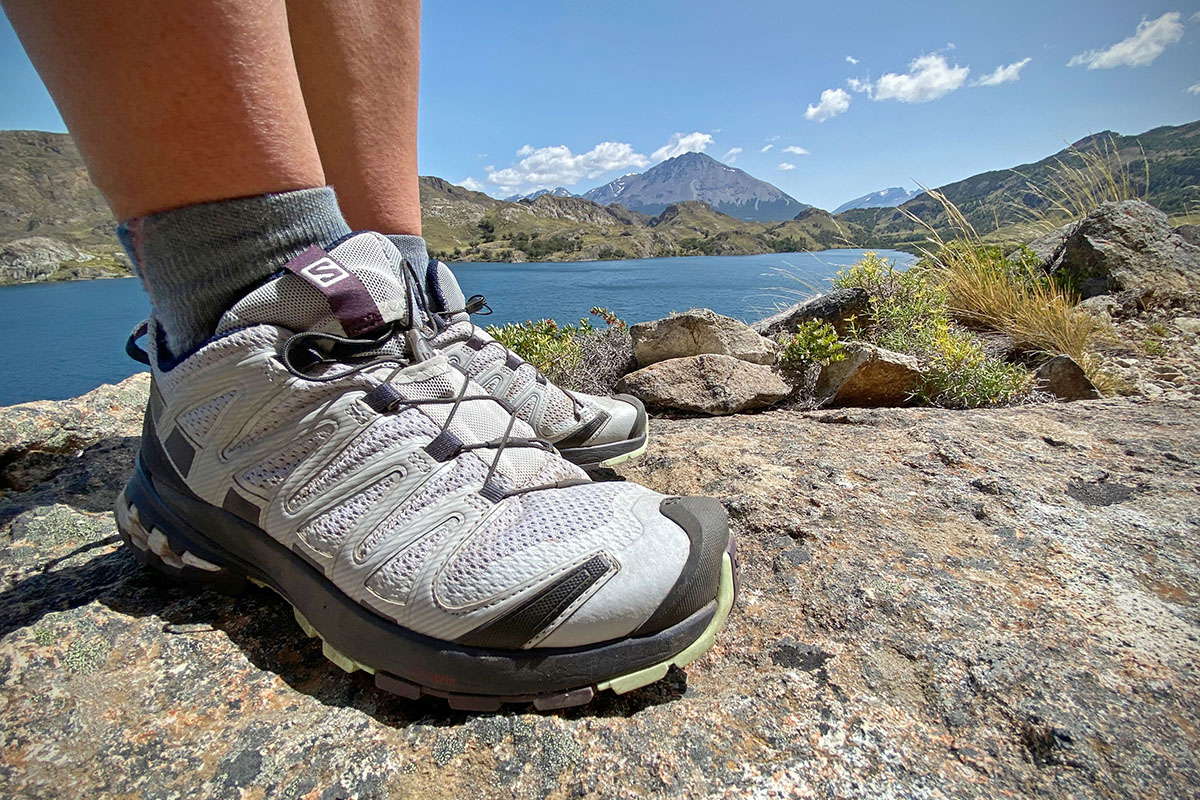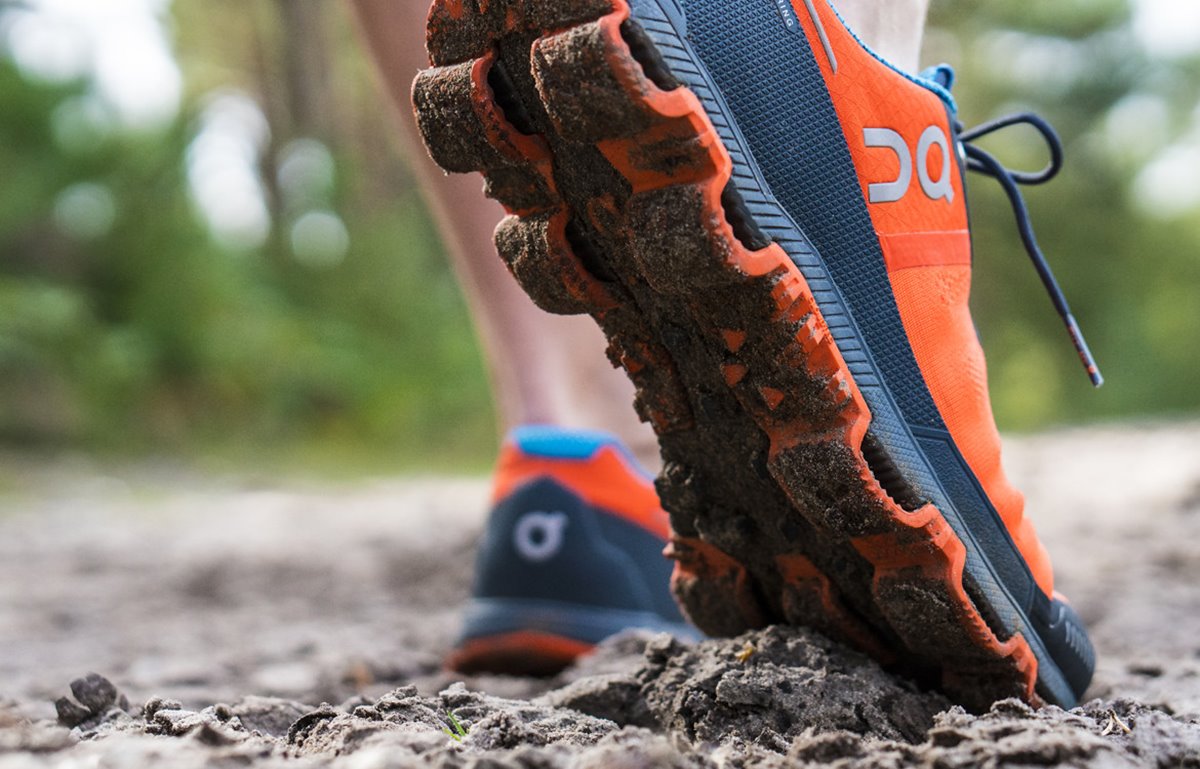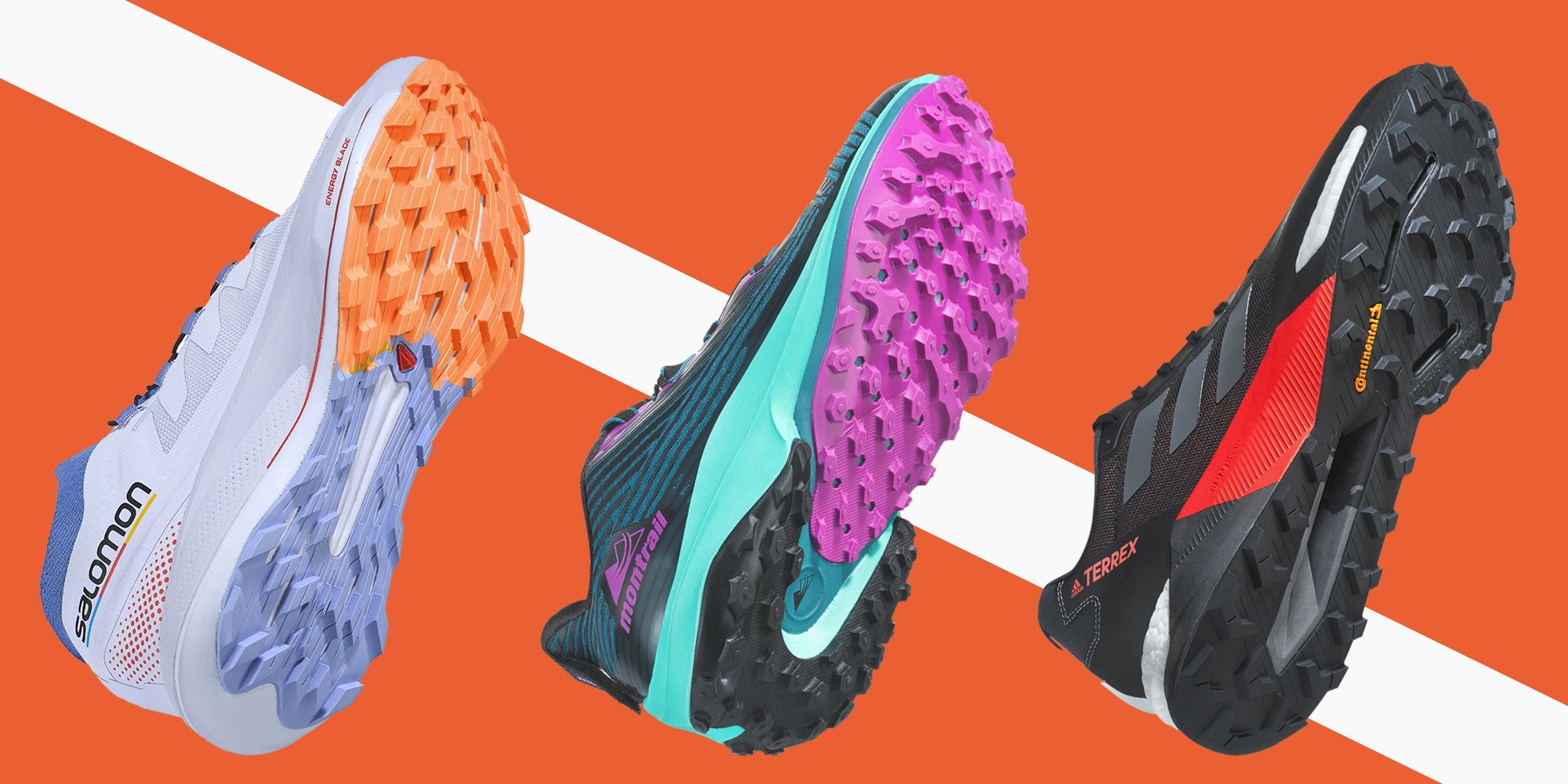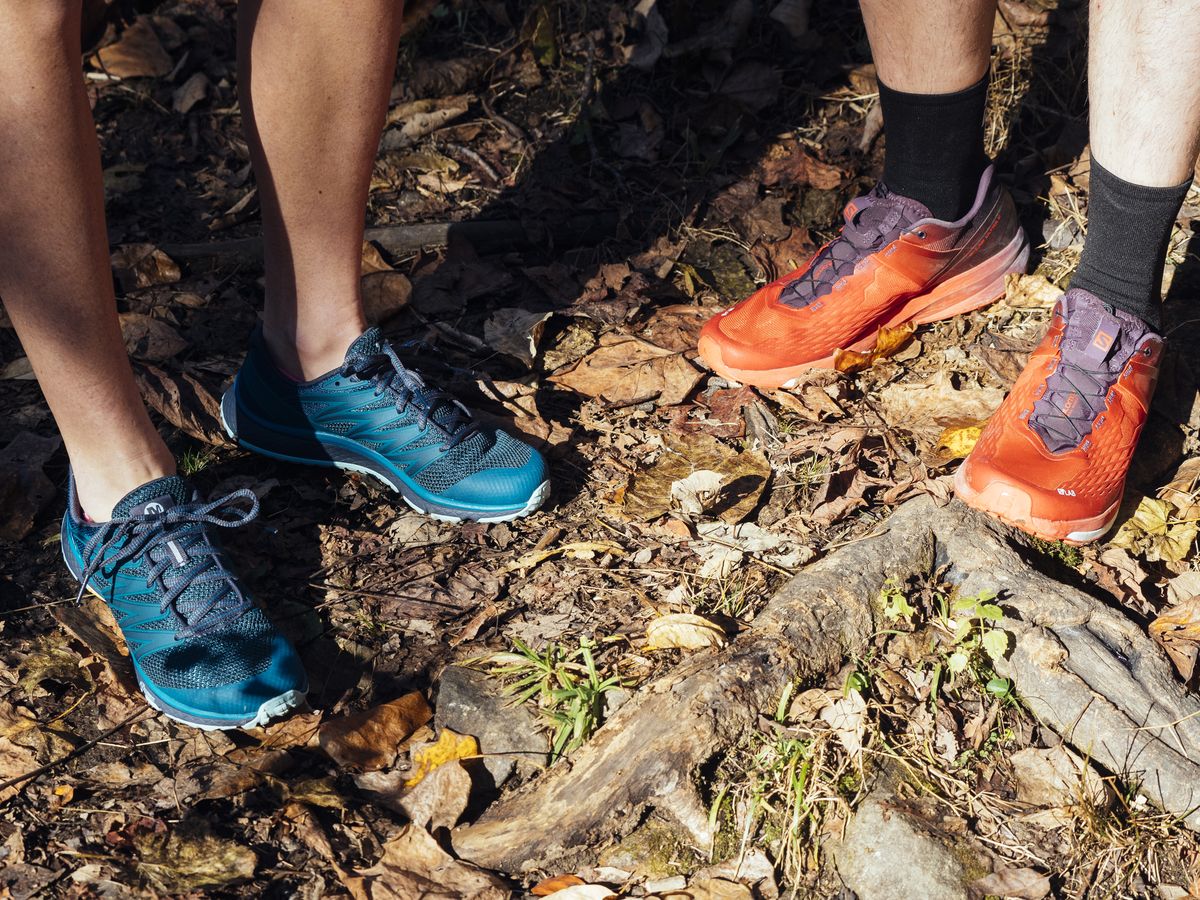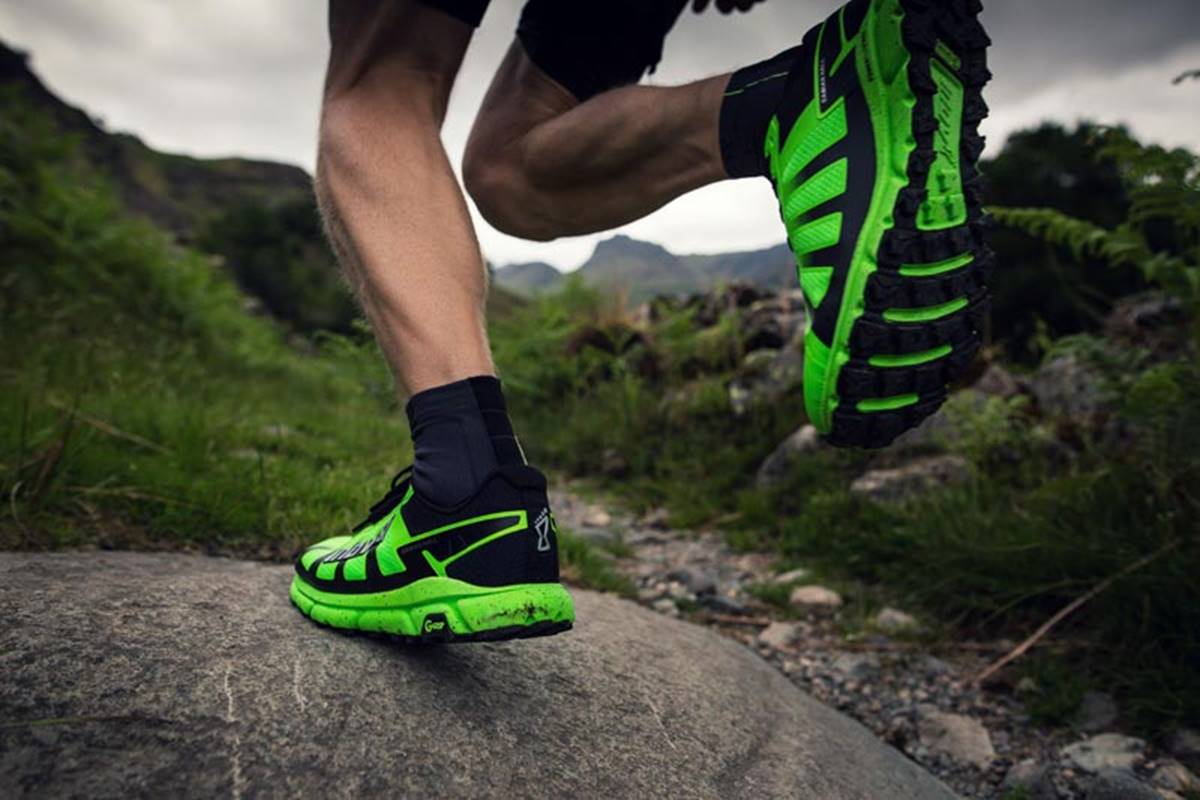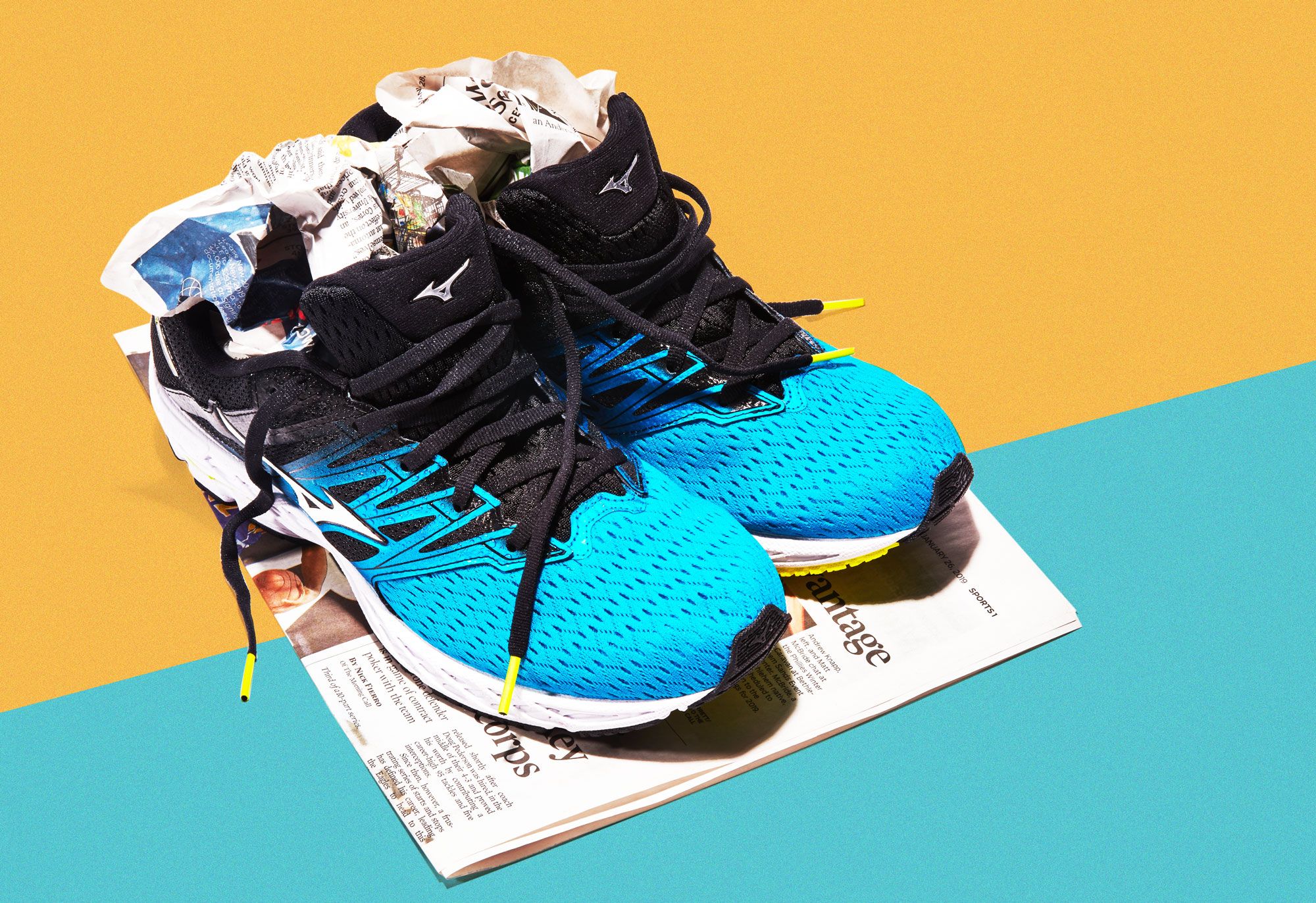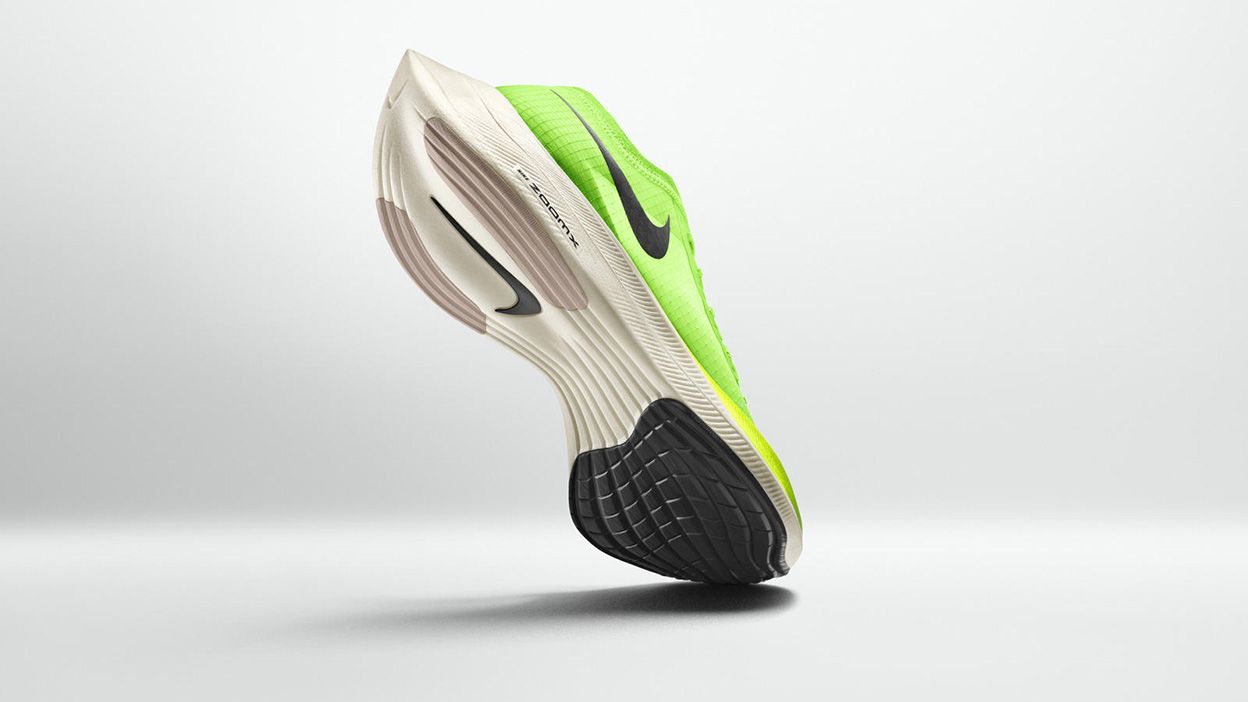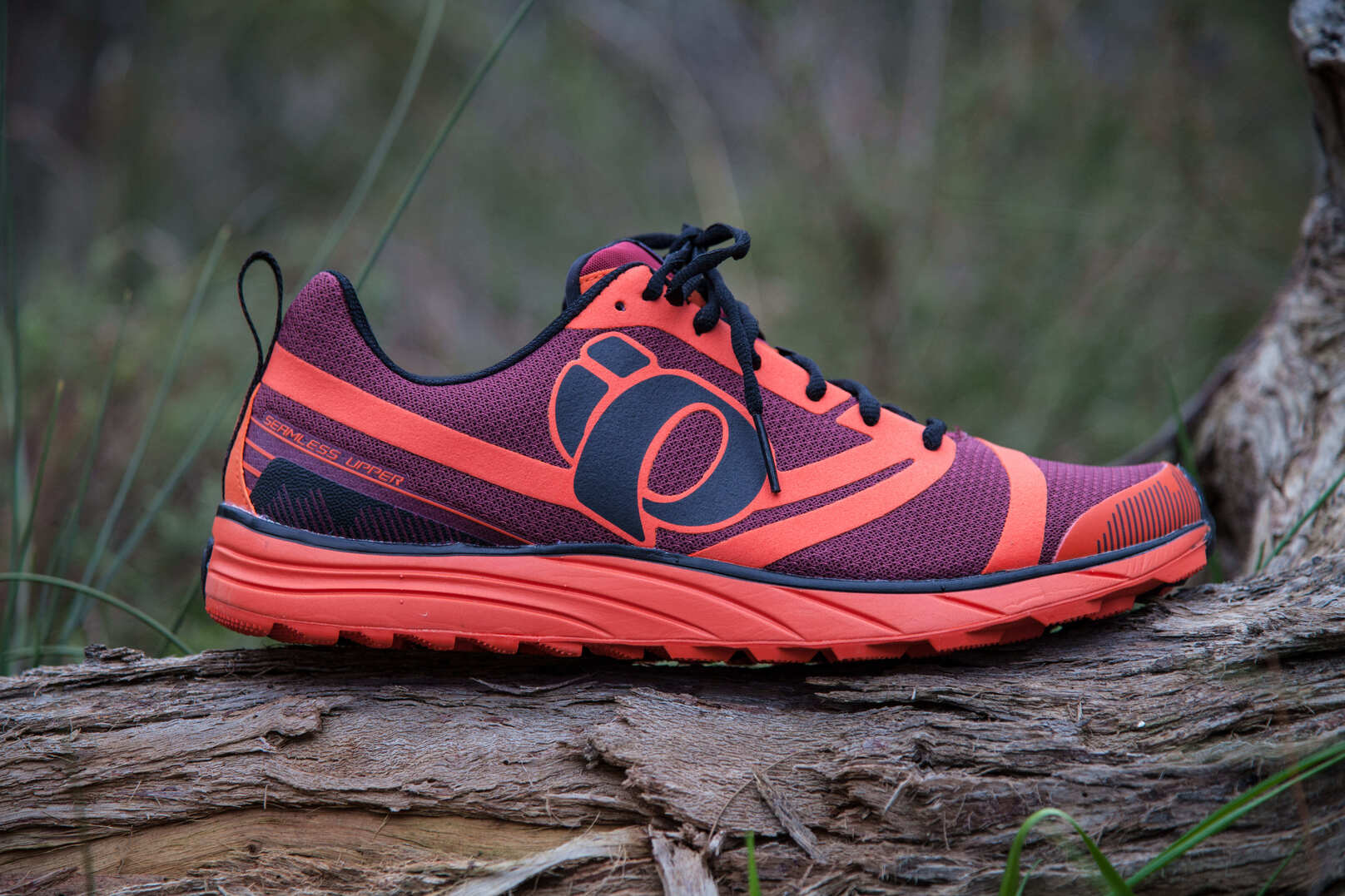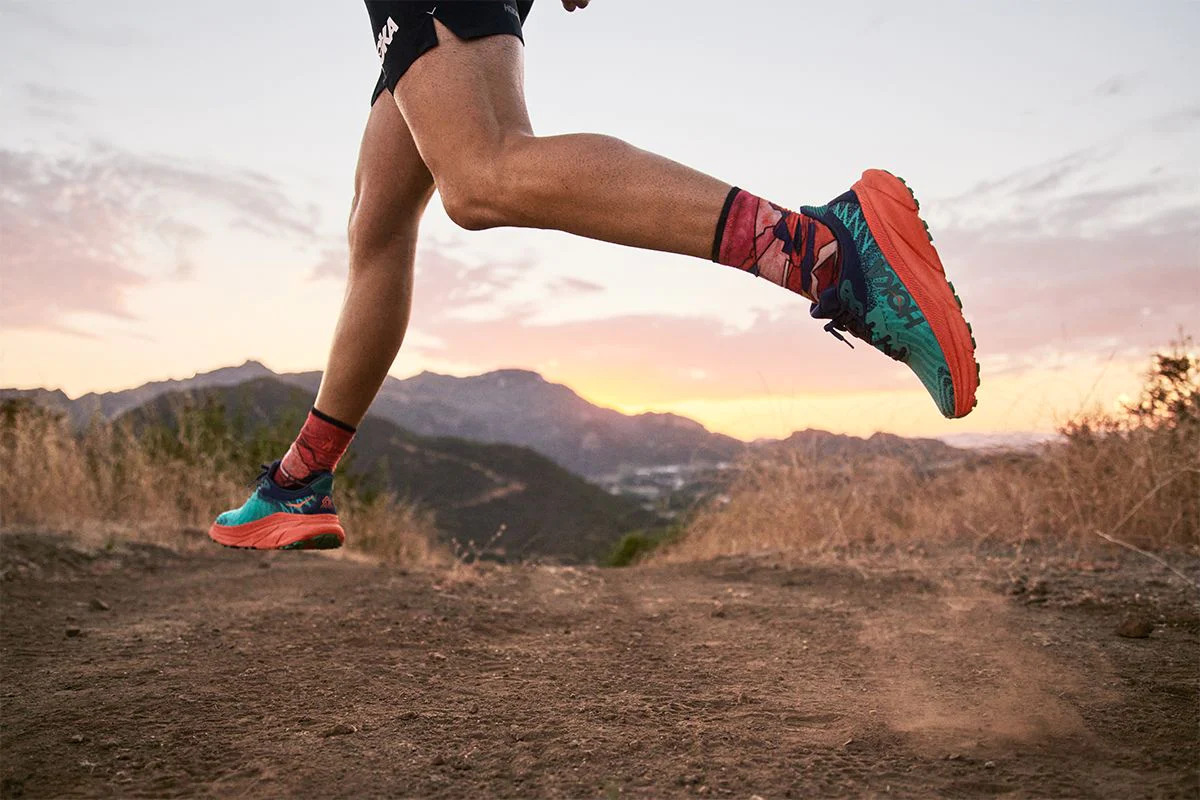

Featured
How To Choose Best Trail Running Shoes
Modified: May 22, 2024
Discover the top tips for selecting your perfect trail running shoes. Our expert guide features the best featured options for ultimate performance and comfort.
Introduction
Trail running is an exhilarating and adventurous sport that takes you off the beaten path and into nature’s playground. Whether you are a seasoned trail runner or a beginner looking to explore new terrain, one thing is certain – having the right pair of trail running shoes is essential for a comfortable and safe experience.
Unlike road running shoes, trail running shoes are specifically designed to withstand the rugged and unpredictable nature of off-road terrains. They offer additional support, traction, and protection to help you navigate through uneven trails, slippery surfaces, and rocky obstacles.
Choosing the best trail running shoes can be a daunting task, given the wide range of options available in the market. Factors such as cushioning, stability, traction, fit, and durability should all be taken into consideration to ensure that you find the perfect pair that suits your individual needs and preferences.
In this article, we will guide you through the essential factors to consider when selecting trail running shoes, the different types available, and the key features to look for in a high-quality pair. Whether you are planning a short trail run or embarking on an ultramarathon, this guide will assist you in making an informed decision that will enhance your performance and enjoyment on the trails.
It’s time to lace up your running shoes and dive into the world of trail running. Let’s explore the exciting journey of finding your ideal pair of trail running shoes.
Factors to Consider When Choosing Trail Running Shoes
Choosing the right trail running shoes can make all the difference in your comfort, performance, and overall trail running experience. Here are some important factors to consider when selecting your trail kicks:
1. Terrain: Consider the type of terrain you typically run on. Are you a mountain trail enthusiast or do you prefer less technical trails? Choose shoes with the appropriate features, such as more aggressive outsoles and added stability for rugged terrains, while opting for lighter and more flexible shoes for smoother trails.
2. Pronation: Determine your foot pronation to find shoes that provide the right amount of arch support and stability. Pronation refers to how your foot rolls inward or outward when you run. Understanding your pronation type will help you find shoes that offer the right level of support for a comfortable run.
3. Cushioning: Consider the amount of cushioning you prefer in your shoes. If you run long distances or on rocky terrains, you may need more cushioning to absorb impact. However, if you prefer a more minimalist feel or run shorter distances, you can opt for shoes with less cushioning.
4. Fit: Proper fit is crucial for avoiding discomfort and injuries. Ensure that your shoes have enough space in the toe box to allow for natural toe splay, and that the heel and midfoot areas provide a secure and snug fit. Remember to try on shoes while wearing the type of socks you would typically wear during your runs.
5. Weight: Consider the weight of the shoes and how it aligns with your running style and preferences. Lighter shoes can provide a more responsive and nimble feel, while heavier shoes may offer more stability and protection.
6. Support and Stability: Look for shoes that provide sufficient support and stability to prevent injuries. Features like a structured or semi-rigid midsole, arch support, and a secure lacing system can help keep your feet stable and aligned during your trail runs.
7. Durability: Trail running can be tough on shoes, so opt for shoes made with durable materials that can withstand the elements and the wear and tear of the trails. Reinforced toe caps and rugged outsoles can provide added durability and protection.
8. Price: Set a budget based on your needs and the features you prioritize. While it’s tempting to go for the most expensive shoes on the market, remember that there are many affordable options available that still offer great performance and quality.
By considering these factors, you can narrow down your options and find the trail running shoes that best suit your specific needs and preferences. Now that you have a solid understanding of the key considerations, let’s delve into the different types of trail running shoes available in the market.
Types of Trail Running Shoes
Trail running shoes come in various types, each designed to cater to different terrains and running styles. Understanding the different types can help you make an informed decision when choosing the right pair for your trail adventures. Here are the main types of trail running shoes:
1. Light Trail Running Shoes: These shoes are designed for smooth and well-maintained trails, offering a lightweight and flexible construction. They provide good traction but may not have the same level of protection as other types for more technical terrains.
2. Moderate Trail Running Shoes: Suitable for a wide range of trails, these shoes offer a balance between protection, stability, and agility. They have more robust features, such as durable outsoles and added cushioning, to handle moderate technical terrains.
3. Technical Trail Running Shoes: Designed for challenging and rocky terrains, these shoes offer maximum protection, durability, and stability. They often have aggressive outsoles for superior traction, reinforced toe caps for added protection, and a stiffer construction to handle rough trails with ease.
4. Ultra-Trail Running Shoes: Ideal for long-distance trail running, ultra-trail shoes prioritize comfort and cushioning. They are designed to provide maximum support and shock absorption, allowing you to go the distance without sacrificing comfort.
When choosing the type of trail running shoes, consider the level of technicality and the condition of the trails you will be running on. If you primarily run on well-groomed paths, light trail shoes may be sufficient. However, if you tackle more challenging terrains, opt for technical or ultra-trail shoes to ensure you have the necessary grip, protection, and durability.
Now that you have an understanding of the types of trail running shoes available, let’s explore some key features to consider when choosing your perfect pair. Understanding these features will help you find shoes that offer the right combination of comfort, traction, and durability on the trails.
Cushioning and Stability
When it comes to trail running, cushioning and stability are two essential factors to consider in your shoe selection. These features play a significant role in providing comfort and support during your runs. Let’s explore the importance of cushioning and stability in trail running shoes:
Cushioning: The level of cushioning in a trail running shoe determines the impact absorption and comfort it provides. The right amount of cushioning can help alleviate pressure on your feet and joints, especially when running on uneven and rocky trails. However, it’s important to find a balance – too much cushioning can sacrifice stability, while too little may result in discomfort and fatigue. Consider your running style, preferences, and the type of trails you frequent when choosing the appropriate cushioning level for your shoes.
Stability: Stability is crucial to prevent excessive foot rolling and maintain proper alignment during trail runs. A shoe with good stability features will help reduce the risk of injuries, especially on uneven or technical terrains. Look for shoes with supportive overlays, secure heel counters, and a structured midsole to provide stability and prevent excessive pronation or supination.
It’s important to note that the ideal level of cushioning and stability will vary based on individual needs and preferences. Some runners prefer a more minimalist feel with less cushioning and lighter weight, while others may need more cushioning and stability due to foot issues or running longer distances.
When trying on trail running shoes, pay attention to how they feel on your feet. Take a few steps, jog around the store if possible, and assess the cushioning and stability. Make sure the shoes mold comfortably to the shape of your feet, providing both cushioning and support in the areas that need it most.
Remember, cushioning and stability are not mutually exclusive factors – you can find shoes that offer a good balance between the two. It’s crucial to prioritize your comfort and ensure your shoes provide adequate shock absorption and stability for your trail running adventures.
Now that we have covered cushioning and stability, let’s move on to the next important factor to consider when choosing trail running shoes – traction and grip. These features are vital for maintaining surefootedness and navigating diverse terrains with confidence.
Traction and Grip
When it comes to trail running, traction and grip are crucial factors to consider in your shoe selection. Trail running shoes with proper traction and grip will help you maintain stability and confidently navigate various terrains. Let’s dive into why traction and grip are essential and what to look for in your shoes:
Traction: Traction refers to the shoe’s ability to grip the ground and provide traction on different surfaces. Trail running often involves running on loose gravel, muddy paths, slippery rocks, and other unpredictable terrains. Shoes with good traction will have a specialized outsole design and rubber compound to offer optimal grip and prevent slippage. Look for deep lugs or multidirectional lug patterns on the outsole, as they provide better traction and grip on uneven surfaces.
Grip: Grip refers to the shoe’s ability to maintain contact with the ground during movement. A good grip helps prevent sliding or slipping, especially when running on wet or muddy trails. The outsole’s rubber compound plays a crucial role in determining the shoe’s grip. Shoes made with sticky or high-friction rubber compounds will offer better grip on slippery surfaces. Additionally, look for shoes that have specific features such as rock plates or toe caps that enhance grip and protect your feet from sharp rocks or roots.
When choosing trail running shoes, consider the type of terrain you will be running on. If you frequently encounter muddy or wet conditions, go for shoes with aggressive lugs and a rubber outsole that provides excellent traction and grip. On the other hand, if you mainly run on dry and rocky trails, shoes with smaller lugs and a more durable rubber compound may be suitable.
It’s important to note that the condition of the trails and weather can greatly impact the required level of traction and grip. Depending on the season and location, you may need different types of outsole patterns and rubber compounds to ensure optimal performance.
When trying on trail running shoes, pay attention to how the outsole feels and grips the ground. Walk or jog on different surfaces to assess the traction and grip. Ensure that the shoe’s outsole provides the confidence and stability you need to tackle various terrains without slipping or losing control.
Now that we have covered traction and grip, let’s move on to another important aspect – breathability and water resistance. These features can greatly enhance your comfort and protect your feet from moisture and discomfort during your trail running adventures.
Breathability and Water Resistance
When it comes to trail running, breathability and water resistance are crucial factors to consider in your shoe selection. Your feet need to stay comfortable and protected, regardless of the weather conditions or the intensity of your run. Let’s explore why breathability and water resistance are important and what to look for in your trail running shoes:
Breathability: Breathability is the shoe’s ability to allow air to circulate and keep your feet cool and dry during your runs. As you exert yourself on the trails, your feet can become hot and sweaty, leading to discomfort and the potential for blisters. Trail running shoes with good breathability feature mesh or perforations in the upper material, allowing for proper ventilation and moisture management. This helps to regulate the temperature inside the shoe and keep your feet dry and comfortable throughout your runs.
Water Resistance: Water resistance refers to the shoe’s ability to repel water and keep your feet dry in wet conditions. While it may not be necessary for every trail runner, having some level of water resistance can be beneficial, especially if you frequently encounter muddy or wet terrains. Shoes with water-resistant uppers or a durable water repellent (DWR) coating can help keep your feet dry and protected from moisture. However, keep in mind that no shoe is completely waterproof, and in prolonged exposure to water, some water may eventually seep into the shoe.
When choosing trail running shoes, consider the climate and the typical weather conditions you run in. If you predominantly run in dry and hot environments, prioritizing breathability over water resistance may be the way to go. However, if you often encounter wet or muddy trails, having a certain level of water resistance can be beneficial.
During the shoe fitting process, pay attention to the upper material and its breathability and water-resistant features. Flex and move your feet to assess how well the shoe allows air circulation and how it repels water. Remember, striking the right balance between breathability and water resistance will help keep your feet comfortable and protected during your trail running adventures.
Now that we have covered breathability and water resistance, let’s explore another crucial factor to consider in your trail running shoes – fit and sizing. Getting the right fit is essential for comfort, stability, and preventing foot issues during your runs.
Fit and Sizing
When it comes to trail running shoes, achieving the right fit is essential for a comfortable and enjoyable running experience. The fit and sizing of your shoes can greatly impact your stability, support, and overall performance on the trails. Let’s explore why fit and sizing matter and what to consider when choosing your trail running shoes:
Comfort: A proper fit ensures that your shoes feel comfortable from the moment you put them on. Ill-fitting shoes can cause discomfort, blisters, and even foot pain during your runs. Pay attention to the width and length of the shoes and ensure they accommodate the natural shape of your feet. Look for shoes with a spacious toe box that allows for natural toe splay and a secure fit in the heel and midfoot areas to prevent slipping and rubbing.
Stability: The right fit provides stability and support, preventing your feet from sliding or moving excessively inside the shoe. This is especially crucial when navigating uneven and technical terrains. A secure fit in the heel and midfoot contributes to a stable and controlled running experience. Consider the presence of features like overlays and a secure lacing system that can help lock your feet in place for enhanced stability.
Sizing: Choosing the correct shoe size is important for a comfortable fit. Keep in mind that shoe sizing can vary between brands, so it’s essential to try on different models and sizes to find the perfect match for your feet. Pay attention to the length and width of the shoes and ensure that they provide a snug fit without being too tight. Avoid shoes that are too loose, as they can lead to instability and discomfort during your runs.
When trying on trail running shoes, consider the socks you typically wear during your runs. Wear the same type of socks and make sure to give your feet enough space to move without feeling constricted. Walk, jog, and even run in the shoes to get a sense of how they feel and perform. Take note of any areas of discomfort or pressure points and adjust the size or style accordingly.
It’s important to remember that a good fit is subjective and can vary from person to person. What works for one runner may not work for another. Take the time to find the right fit for your feet and prioritize your comfort and stability on the trails. When in doubt, consult with experts at specialty running stores who can provide guidance and help you find the perfect fit.
Now that you have a solid understanding of the importance of fit and sizing, let’s explore another critical factor – durability and protection. These aspects are crucial for ensuring that your trail running shoes can withstand the tough and rugged nature of off-road running.
Durability and Protection
When it comes to trail running shoes, durability and protection are paramount. Trail running involves navigating through rugged terrains, rocky surfaces, and unpredictable trails, which can put your shoes through a lot of wear and tear. In order to ensure longevity and foot protection, it’s important to choose shoes that are durable and offer adequate protection. Let’s delve into the significance of durability and protection in trail running shoes:
Durability: Trail running shoes should be able to withstand the demands of off-road running. Look for shoes that are constructed with durable materials, such as reinforced uppers and rugged outsoles. Quality stitching and overlays can enhance the shoe’s overall durability. Additionally, consider the overall build and construction of the shoe, ensuring that it can handle the abrasion and impact associated with trail running.
Protection: Given the varied and potentially challenging terrain of trail running, good foot protection is crucial. Your trail running shoes should provide adequate protection from sharp rocks, roots, and other potential hazards on the trails. Look for features such as reinforced toe caps or bumpers, which offer an extra layer of protection for your toes. A solid outsole with enough thickness and stability can also protect your feet from rough or jagged surfaces.
When evaluating the durability and protection of trail running shoes, take into consideration the type of trails and conditions you intend to run in. If you frequently encounter technical and rocky terrains, prioritizing shoes with robust construction and enhanced protection is essential. For smoother trails, you may have more flexibility in terms of the shoe’s durability requirements.
During the shoe selection process, examine the materials, stitching, and reinforcement features in the shoe. Flex and bend the shoe to ensure it feels sturdy and supportive. Additionally, read user reviews and seek recommendations to gauge the durability and longevity of the shoe over time. Remember that investing in a pair of durable and protective trail running shoes can save you from potential injuries and the need for frequent replacements.
Now that we’ve covered durability and protection, let’s explore the importance of trail-specific features in trail running shoes. These features are designed to enhance your performance and comfort on the trails.
Trail-Specific Features
When it comes to trail running shoes, there are specific features designed to enhance your performance and comfort on the trails. These trail-specific features are geared towards providing additional support, traction, and protection when navigating off-road terrains. Let’s explore some of the key trail-specific features to consider when choosing your trail running shoes:
Rugged Outsole: A durable and grippy outsole with aggressive lugs is essential for tackling uneven and slippery terrain. Look for shoes with multidirectional lugs that provide optimal traction on a variety of surfaces. The outsole’s lug pattern should be designed to shed mud and debris to maintain grip and prevent slippage.
Rock Plate: A rock plate is a protective layer located between the midsole and outsole of the shoe. It shields your feet from sharp rocks, roots, and other protrusions on the trail. A well-designed rock plate can prevent discomfort and potential injuries during your runs, allowing you to confidently navigate technical terrains.
Gaiter Compatibility: Gaiters are protective accessories that help keep debris, dirt, and rocks out of your shoes. Some trail running shoes come with built-in or removable gaiter attachment points or loops. These features allow you to easily attach gaiters, ensuring a snug and debris-free fit when running on dusty or muddy trails.
Toe Protection: Running on trails means you might encounter obstacles that can potentially harm your toes. Look for shoes with reinforced toe caps or bumpers that provide added protection against rocks and roots. This extra layer of protection can prevent painful toe injuries during your trail runs.
Drainage Ports: If you frequently run in wet or muddy conditions, shoes with drainage ports can be beneficial. These ports allow water and moisture to escape, preventing your shoes from becoming waterlogged. Drainage ports help maintain a lightweight feel and prevent discomfort caused by wet feet during your runs.
Lacing Systems: Trail running shoes often feature specialized lacing systems to ensure a secure and customizable fit. Some shoes have quick-lace systems or lace pockets to prevent loose laces from getting caught on branches or rocks. These features help keep your laces secure throughout your run and minimize distractions or potential tripping hazards.
When selecting trail running shoes, consider the specific features that align with the type of trails you frequently run on. If you’re a technical trail enthusiast, prioritize shoes with aggressive outsoles, rock plates, and toe protection. If you frequently encounter wet conditions, choose shoes with drainage ports to keep your feet dry. Understanding your needs and preferences will help you find the perfect pair with the right trail-specific features.
Now that we’ve explored trail-specific features, let’s move on to considering brand and price when choosing your trail running shoes.
Brand and Price Considerations
When it comes to purchasing trail running shoes, brand and price are important factors to consider. While there are many reputable brands offering high-quality trail running shoes, the price range can vary significantly. Let’s explore the considerations regarding brand reputation and price when choosing your trail running shoes:
Brand Reputation: Brand reputation can provide insight into the overall quality, durability, and performance of the trail running shoes. Established brands often have a track record of producing reliable and well-designed footwear. They invest in research and development to improve their shoe technologies and offer models specifically tailored to the needs of trail runners. Additionally, reputable brands usually have a wide range of options, catering to various terrains, foot types, and preferences. However, it’s worth noting that lesser-known brands may also provide excellent options that meet your requirements. Don’t solely rely on brand reputation but consider it as one of the factors during your decision-making process.
Price: Price is an important consideration when purchasing trail running shoes. It’s essential to set a budget based on your preferences and requirements. While high-end models may offer advanced technologies and features, they may not always be necessary for every trail runner. Consider your running style, the type of trails you frequent, and the level of performance you seek. Additionally, factors such as durability and the lifespan of the shoes should be taken into account when assessing the value for money. Remember that finding the right fit, comfort, and necessary features should be prioritized over the price tag alone.
It’s important to conduct your own research and try on different brands and models to determine the best fit for your needs and preferences. Take advantage of shoe reviews, user feedback, and recommendations from experienced trail runners to gain insights into the performance and quality of different brands and models. Additionally, consider visiting specialty running stores or consulting with experts who can provide personalized guidance based on your specific requirements.
Ultimately, the choice between brands and the amount you’re willing to invest will depend on your personal preferences, budget, and the features that matter most to you. Remember to prioritize the performance and suitability of the shoes for your trail running adventures, rather than solely relying on brand reputation or price.
With all these considerations in mind, you’re now equipped to make an informed decision and find the perfect pair of trail running shoes that will elevate your performance and comfort on the trails.
Conclusion
Choosing the best trail running shoes is crucial for a comfortable, safe, and enjoyable trail running experience. By considering factors such as terrain, pronation, cushioning, stability, traction, breathability, fit, durability, and trail-specific features, you can find the perfect pair that meets your individual needs and preferences.
Remember that trail running shoes are specifically designed to withstand the challenges of off-road terrains. Light trail running shoes are suitable for smoother paths, while technical trail running shoes offer the necessary stability and protection for rugged terrains. Moderate and ultra-trail running shoes cater to varying degrees of technicality and distance.
Cushioning and stability play a significant role in providing comfort and preventing injuries. Opt for a cushioning level that suits your running style and choose shoes that offer stability features such as structured midsoles and secure lacing systems.
Traction and grip are essential for maintaining surefootedness on uneven and slippery surfaces. Look for shoes with an aggressive lug pattern and a rubber compound that provide optimal traction. Consider water resistance and breathability to ensure your feet stay dry and comfortable during your runs.
The right fit and sizing of your trail running shoes are crucial for comfort, stability, and preventing foot problems. Ensure there is enough room in the toe box while still maintaining a secure fit in the heel and midfoot areas.
Durability and protection are important factors to consider, especially when running on rough and unpredictable terrains. Look for durable materials, reinforced toe caps, and rock plates to protect your feet from sharp objects.
Trail-specific features such as a rugged outsole, drainage ports, and gaiter compatibility can enhance your performance and comfort on the trails.
Brand reputation and price should be considered while keeping in mind the fit, features, and overall value for money. Remember that finding the right shoe that meets your specific needs is more important than simply relying on the brand or price.
With all these considerations, you are now equipped to make an informed decision and find the best trail running shoes that will support your adventures on off-road terrains. Lace up, hit the trails, and enjoy the exhilarating experience that trail running has to offer!
